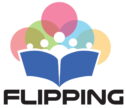Introduction
In times of crisis, we are often forced to adapt and find new ways of doing things. The recent shift from traditional classroom settings to online learning has shed light on the rigidity of many educational systems. However, it has also demonstrated the potential for change and development. One teaching model that has proven to be effective and adaptable is blended learning, particularly the approach known as flipped learning.
Flipped learning involves learners watching online lectures, engaging in discussions, and conducting research at home, while utilizing their classroom time to apply and explore the concepts they have learned. It offers a transformative educational experience that not only benefits students during uncertain times but also aligns with the evolving needs of the labor market.
The Power of Blended Learning
A 2015 meta-analysis found that blended learning models, such as flipped learning, are more effective than traditional face-to-face or solely online approaches. This is due to the combination of online and in-person interactions, which create a dynamic and engaging learning environment. By providing students with the flexibility to learn at their own pace and access additional resources, blended learning fosters a deeper understanding of the subject matter.
Furthermore, flipped learning promotes valuable skills for future societies. It encourages application-based and problem-solving-based approaches, which are essential in a rapidly changing world. These skills are highly sought after by employers and are crucial for success in the evolving labor market.
Embracing the Flipped Learning Model
Implementing flipped learning requires a shift in teaching strategies and the integration of technology into the learning process. Educators take on the role of mentors, guiding students through their online learning activities and facilitating meaningful discussions in the classroom.
By embracing flipped learning, educators can create a more interactive and personalized learning experience for their students. This approach not only enhances student engagement but also empowers them with the skills needed to become lifelong learners and independent critical thinkers.
Conclusion
As we navigate through uncertain times, it is essential to explore innovative teaching models that can adapt to changing circumstances. Flipped learning offers a promising solution, allowing students to access knowledge at their own pace while providing valuable face-to-face interactions in the classroom. With its focus on application and problem-solving, flipped learning prepares students for the demands of the future labor market.
